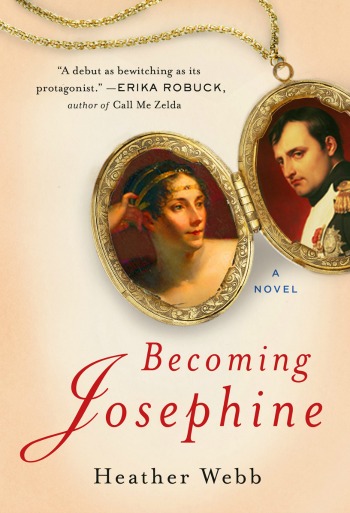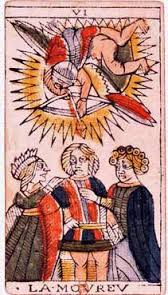 This Valentine’s Day I’m pleased to introduce and welcome to my blog author Heather Webb and her debut novel Becoming Josephine. A historical about the life of France’s beloved Josephine Bonaparte and her famous and heart-wrenching love story with Napoleon Bonaparte.
This Valentine’s Day I’m pleased to introduce and welcome to my blog author Heather Webb and her debut novel Becoming Josephine. A historical about the life of France’s beloved Josephine Bonaparte and her famous and heart-wrenching love story with Napoleon Bonaparte.
Through concise storytelling and cleaver descriptions Webb brings to life Josephine and her plight.
Q: What sparked your interest in your protagonist, Josephine Bonaparte?
The idea for this novel came to me in two parts. I taught a unit about the French Revolution in my high school French classes for several years, which sparked my interest in the time period. Yet despite my teaching, I knew little about Josephine and I “discovered” her later. Ultimately she was a minor player in a sea of France’s most famous and infamous people during the Revolution—at least until Robespierre fell and the Directoire took over the government.
When I began to feel the pull to writing a book, I had a dream about Josephine. Strange, but true. From the very first biography I read, I was hooked. Her vivid childhood home, her adaptable nature and courageous spirit had me enthralled. Her rich life story set to the backdrop of the chaotic Revolution and the opulent Napoleonic Empire cinched the deal.
Q: Will you share with us one of your favorite things about Josephine?
There are so many things I love about Josephine—she was a patron of the arts, an enthusiastic botanist, a fashion icon, but the most captivating things about her to me were her adaptable nature and courageous spirit and her generosity to everyone she knew. I also enjoyed reading about her tumultuous love affairs!
Q: What was one of her eccentricities that is little known?
She chewed sugarcane as a kid and her love of sugar never went away. She had quite a persistent sugar tooth.

The Tarot de Marseille is one of the French standard patterns from which many tarot decks of the 19th century and later were derived. This card is L’Amoureux (The Lovers).
Q: Uniquely you have focused on Josephine’s use of Tarot cards, where did you uncover this intriguing detail?
It’s in a lot of the research, believe it or not. She used her cards faithfully and found relief in reading their messages, particularly during some of the more tumultuous times of her life.
Q: What archival documents did you reference to help create the Martinique sugar plantation scenes of the novel?
I read many documents on JStors, a journal database, that focused on sugar plantations specifically, but also I have a Master’s Degree in Latin American studies and have spent time in the jungles of Belize, Guatemala, and Mexico for my field work so I know exactly what a jungle smells, sounds, and feels like. I’m very familiar with the histories of the region.
Q: Okay, I have to ask: fact or fiction on the sponge cake guillotine heads? If true, where did you discover such a deliciously gruesome minutia?
That was fiction! I made it up in this crazy head of mine. As a matter of fact, it was one of my favorite scenes to write because I’m a foodie so I REALLY enjoyed being creative there.
Q: What interesting tidbits did you discover in your research but could not include in the book, but can share here?
There’s so much! The French Revolution itself is a gold mine of fascinating and horrifying facts, but also with Josephine and Napoleon’s lives, I left so much out. If I had incorporated it all, it would have been a four book series. For example, Napoleon massacred whole peoples and I don’t go into that much at all in the book. Also, he fell in love with Maria Walewski, his Polish mistress who was already married at the time, and impregnated her. All of the Bonapartes led intriguing lives with some really incredible stories.
As for Josephine, she collected artworks of all kinds and was the patron of many females artists in her day. In terms of her sexual life, she truly loved Hippolyte Charles and spent quite a bit of time with him—much more than I gave her credit for in Becoming Josephine. In addition she went on dozens of pilgrimages like every queen before her, but gave away jewels and money to the poor at each of her stop
Q: What is your writing process?
This is a tough question to answer, because I feel I’m always learning and changing to see if new processes will work better for me. What I begin with is extensive research—biographies, journals, nonfiction books about specific subjects I need to learn more about, documentaries, travel. For at least three months I read for hours and hours each day, take notes, and organize a historical outline. From there I devise a scene outline that I put together in a three act structure. It’s a fairly general outline, but it helps me keep track of what goes where. The next step is to work on the opening scene. I’m fairly linear in my thinking so once I start writing I go from beginning to end. I revise from beginning to end as well. With each draft of revisions I focus on one or two aspects at a time and then begin again. When I get close to finishing, I print it out and edit the chapters out of order (reading them aloud) to catch final errors, word choices, and flow.
Q: What are you working on next?
Currently I’m revising RODIN’S LOVER, a novel of Camille Claudel and Auguste Rodin—sculptors, collaborators, and lovers—set to the backdrop of the Belle Époque. The novel explores the themes of struggling in the art world, obsession, and madness. It releases in winter of 2015.
Happy Valentine’s Day!
Thank you so much Heather for this fascinating interview, and I already can’t wait for your next release!!!
This is a wonderful Valentine’s Day gift for yourself or loved one! Becoming Josephine
 Heather Webb grew up a military brat and naturally became obsessed with travel, culture, and languages. She put her degrees to good use teaching high school French for nearly a decade before turning to full time novel writing and freelance editing. Her debut, BECOMING JOSEPHINE, released January 2014 from Plume/Penguin. Her forthcoming novel, RODIN’S LOVER, will release in winter of 2015.When not writing, Heather flexes her foodie skills or looks for excuses to head to the other side of the world. She loves to chitchat on Twitter with new reader friends or writers (@msheatherwebb) or via her blog (http://www.Heatherwebbauthor.
Heather Webb grew up a military brat and naturally became obsessed with travel, culture, and languages. She put her degrees to good use teaching high school French for nearly a decade before turning to full time novel writing and freelance editing. Her debut, BECOMING JOSEPHINE, released January 2014 from Plume/Penguin. Her forthcoming novel, RODIN’S LOVER, will release in winter of 2015.When not writing, Heather flexes her foodie skills or looks for excuses to head to the other side of the world. She loves to chitchat on Twitter with new reader friends or writers (@msheatherwebb) or via her blog (http://www.Heatherwebbauthor.